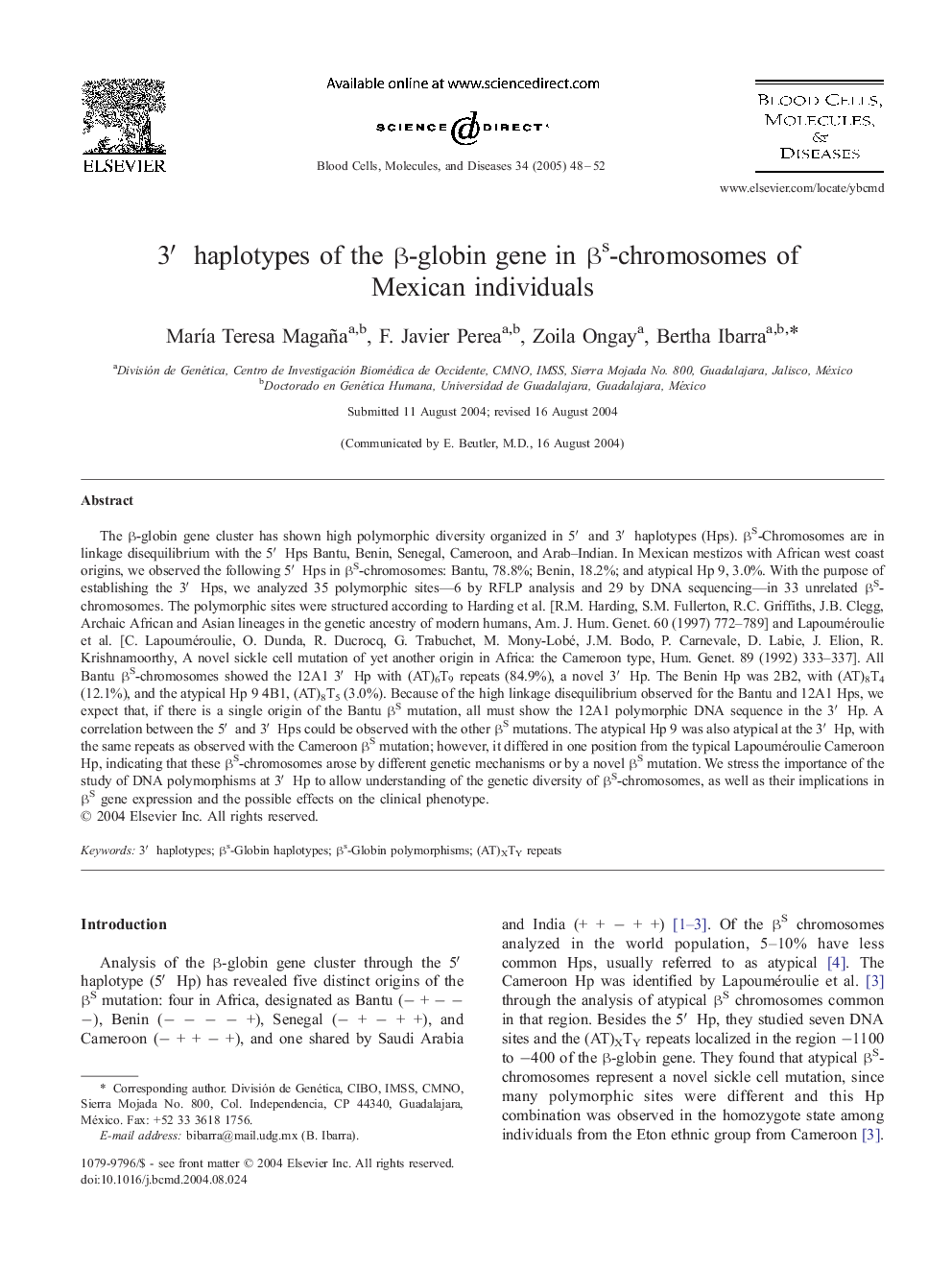| Article ID | Journal | Published Year | Pages | File Type |
|---|---|---|---|---|
| 9137907 | Blood Cells, Molecules, and Diseases | 2005 | 5 Pages |
Abstract
The β-globin gene cluster has shown high polymorphic diversity organized in 5â² and 3â² haplotypes (Hps). βS-Chromosomes are in linkage disequilibrium with the 5â² Hps Bantu, Benin, Senegal, Cameroon, and Arab-Indian. In Mexican mestizos with African west coast origins, we observed the following 5â² Hps in βS-chromosomes: Bantu, 78.8%; Benin, 18.2%; and atypical Hp 9, 3.0%. With the purpose of establishing the 3â² Hps, we analyzed 35 polymorphic sites-6 by RFLP analysis and 29 by DNA sequencing-in 33 unrelated βS-chromosomes. The polymorphic sites were structured according to Harding et al. [R.M. Harding, S.M. Fullerton, R.C. Griffiths, J.B. Clegg, Archaic African and Asian lineages in the genetic ancestry of modern humans, Am. J. Hum. Genet. 60 (1997) 772-789] and Lapouméroulie et al. [C. Lapouméroulie, O. Dunda, R. Ducrocq, G. Trabuchet, M. Mony-Lobé, J.M. Bodo, P. Carnevale, D. Labie, J. Elion, R. Krishnamoorthy, A novel sickle cell mutation of yet another origin in Africa: the Cameroon type, Hum. Genet. 89 (1992) 333-337]. All Bantu βS-chromosomes showed the 12A1 3â² Hp with (AT)6T9 repeats (84.9%), a novel 3â² Hp. The Benin Hp was 2B2, with (AT)8T4 (12.1%), and the atypical Hp 9 4B1, (AT)8T5 (3.0%). Because of the high linkage disequilibrium observed for the Bantu and 12A1 Hps, we expect that, if there is a single origin of the Bantu βS mutation, all must show the 12A1 polymorphic DNA sequence in the 3â² Hp. A correlation between the 5â² and 3â² Hps could be observed with the other βS mutations. The atypical Hp 9 was also atypical at the 3â² Hp, with the same repeats as observed with the Cameroon βS mutation; however, it differed in one position from the typical Lapouméroulie Cameroon Hp, indicating that these βS-chromosomes arose by different genetic mechanisms or by a novel βS mutation. We stress the importance of the study of DNA polymorphisms at 3â² Hp to allow understanding of the genetic diversity of βS-chromosomes, as well as their implications in βS gene expression and the possible effects on the clinical phenotype.
Related Topics
Life Sciences
Biochemistry, Genetics and Molecular Biology
Molecular Biology
Authors
MarÃa Teresa Magaña, F. Javier Perea, Zoila Ongay, Bertha Ibarra,
